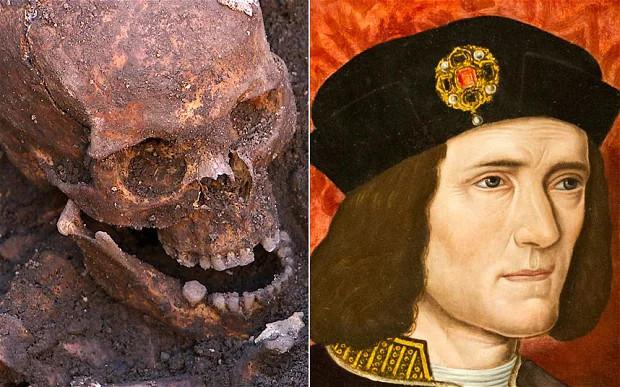The Secrets of King Richard IIIs Oral Microbiome: An Archaeogenetic Study of Teeth





The Oral Microbiome of King Richard III: A Scientific Journey Through Time
In 2012, an unassuming car park in Leicester, England, gave way beneath the trowels of archaeologists to reveal one of the most thrilling archaeological finds of the 21st century: the remains of King Richard III. This groundbreaking discovery took place on the grounds of what was once the medieval Grey Friars Church, long since lost to history beneath the modern city's sprawl. The excavation context reveals a hasty burial without ceremony or shrouding, a fate that would prove scientifically invaluable centuries later.
King Richard III has been immortalized for centuries as a villain, thanks to disparaging portrayals in works by chroniclers and, most famously, by William Shakespeare. However, his skeletal remains allow us a direct link to reevaluate this legacy through a scientific lens. Richard ascended the throne during one of England's most turbulent periods, the Wars of the Roses, and met his end in the dramatic Battle of Bosworth in 1485. His body, stripped of armor and hastily buried without coffins or rich tapestries, lay hidden until modern archaeology intervened. The skeletal analysis bore signs of his violent end, with multiple battle wounds confirming his grisly demise, while the distinctive curvature of his spine confirmed historical accounts of his physical deformities, highlighting the impact of scoliosis that plagued him during his formative years.
Modern genetic analysis now allows us to compare our DNA to that of real ancient populations. It’s a striking way to see how deeply intertwined your story might be with the migrations and empires of the past — try it at MyTrueAncestry.com.
Bringing Richard III out into the light not only confirmed historical accounts of his hasty burial and perimortem injuries—including eleven battle scars and possibly post-mortem humiliations—but it also offered insights into the less understood nuances of his life. Through cutting-edge scientific methods, analysis of his remains has helped confirm his age, stature, and advanced the understanding of his chronic spinal deformity—identifying it as idiopathic adolescent-onset scoliosis. The remarkable preservation of DNA within his dental calculus provided an extraordinary opportunity to examine ancient microbiota using modern metagenomic methods.
Isotopic analyses of Richard's teeth provided intriguing evidence of dietary changes that marked his journey from boyhood to kingship. The shift from regular consumption to a diet brimming with high-status foods like wine and high-trophic level fish paints a picture of an increasingly opulent royal lifestyle. Despite his extravagant diet rich in wine and game meats—hallmarks of a regal lifestyle—the analysis revealed something quite fascinating about his oral microbiome. Despite this luxurious fare, when exploring his dental calculus, his oral microbiome didn't differ greatly from those of his peers and less affluent contemporaries around Northern Europe, challenging our assumptions about diet and lifestyle effects on oral health.
Richard's dental calculus—or tooth tartar, which traps microbes over a lifetime—produced exceptional DNA samples. It boasted nearly four hundred microbial species and stood as one of the best-preserved ancient oral metagenomes yet studied. The dental calculus from Richard III's teeth presented a conserved enigma of historical microbiota that showcased remarkable microbial diversity consistent with other populations across 7,000 years of Northern European history. This finding affirmed a universal stability of human microbial communities despite differences in diet and status, contradicting assumptions that the luxuries of royal kitchens significantly affected oral microbial compositions.
By comparing Richard's calculus with others from the Neolithic to medieval periods in Germany, Ireland, and the Netherlands, it becomes clear that a king's lifestyle didn't impact his oral bacteria profile significantly. Unlike the dramatic details of his battlefield death, the royal oral microbiome reveals surprising normalcy. What makes Richard III's oral relic extraordinary is not a distinctive variety of microbes but the sheer number and state of preservation of the microbial DNA itself. Ordinarily, archaeological findings related to dental calculus primarily involve people from ordinary backgrounds, making Richard III's regal example particularly illuminating for comparative studies.
Among the various pathogens, the bacterial species Tannerella forsythia was notably abundant in Richard's dental deposits, consistent with periodontitis—a common affliction then and now. This bacterium, infamous in modern times for its role in periodontal disease, forms part of what's called the "red complex" alongside Porphyromonas gingivalis. The recovery of a metagenome-assembled genome of this periopathogen shed intriguing light on how similar ancient strains were to those found in modern times, suggesting that these microbes have persisted for centuries with little variation in virulence. Studies of such microbial communities continue providing valuable clues into the historic prevalence of oral diseases.
While the preserved DNA offered profound insights into Richard's oral health, the retrieval of dietary DNA proved elusive. Despite expectations of finding genetic traces from his luxurious feasts, very little plant and animal DNA was retrievable from the dental calculus. This highlights ongoing challenges in ancient DNA studies, as even with advanced techniques employed, distinguishing dietary sequences remains a task fraught with complications. The absence of authentic dietary DNA suggests that royal feasting staples like luxurious fish and wines don't leave a reliable genetic trace in dental plaque, indicating that mineralized plaque might not be the best candidate for ancient dietary reconstructions.
https://www.biorxiv.org/content/10.1101/2025.09.21.677585v1
Discover how your DNA connects to ancient civilizations at www.mytrueancestry.com.
Comments